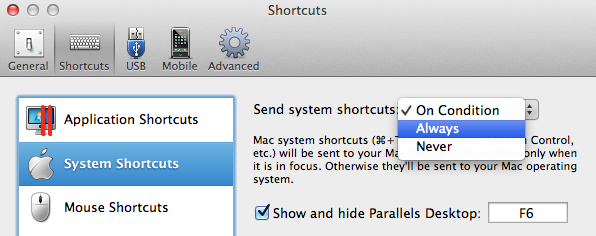Parallels For Mac Windows Function Keys
Related Articles

- 1 The 'Control' Key Doesn't Work with a Microsoft Keyboard & a Mac
- 2 Use a Microsoft Keyboard on an Apple PC
- 3 Turn Off the F-Lock on a Gateway Laptop
- 4 Strengths & Weaknesses of Linux-Based Systems
Parallels For Mac Windows Not Connecting To Internet
VMware Fusion enables Mac users to run Microsoft Windows and Linux operating systems on their Intel-based Apple Macintosh computers, turn an existing PC into a virtual computer on a Mac and run multiple virtual machines without rebooting to switch OSes. Because the Mac OS and Windows use different command keys to issue comparable commands to their respective operating systems, Mac and Windows users often find each others' computer keyboards frustrating, especially when they work in dual-platform application software. VMware Fusion simplifies the keyboard switch for Mac users who virtualize Windows on their Apple hardware.
Parallels Desktop is a software that allows you to use Windows operating system inside a Mac. This way you don’t have to buy a new computer and you can use both operating systems simultaneously. You will get a window of Parallels Desktop inside Mac that you can close, minimize and maximize according to your need. Allow Parallels Desktop to send the shortcuts to Windows virtual machine. Find Parallels Desktop|| logo on Mac menu bar > open Preferences > navigate to Shortcuts tab > set Send macOS system shortcuts option to Always. You will be prompted to allow Parallels.
Parallels 8 For Mac
VMware Fusion
Virtual machines enable you to run old software that requires an equally outdated OS, test software code without running an additional computer and maintain multiple versions of the same OS on the same system. As of early 2012, Mac users can use VMware Fusion to run versions of the Windows operating system ranging from Windows 3.1 through Windows 7 on their Macs without adding to or changing their computer hardware. Unlike Apple's Boot Camp, which also supports Windows on the Mac, VMware Fusion does not require you to reboot your system to switch among operating systems.
Macintosh Keys
Most of the keys on a Macintosh keyboard replicate the design and layout of the keyboards used with Windows operating systems. However, the Mac uses both a 'Command' key, which provides functionality similar to Windows' 'Ctrl' key, and a 'Control' key that has no equivalent under Windows. In function and location but not in name, the Macintosh 'Delete' key equals Windows' 'Backspace' key. The Mac uses the 'Option' key when the Windows uses its 'Alt' key, but the keys don't occupy the same keyboard locations.
Windows Keys
Macintosh users who sit down at a Windows keyboard to work in dual-platform applications may find themselves pressing the Windows 'Alt' key when they want its 'Ctrl' key to activate the commands preceded by the Mac's 'Command' key. Their search for the 'Alt' key to replace the Mac's 'Option' key often lands them on the 'Windows' or 'Win' key, which did not exist on Windows keyboards until the introduction of Windows 95. Windows also includes a dedicated key to capture or print the contents of the computer screen, and to switch the numeric keys between typing numbers and functioning like the navigational arrow keys. The Mac uses a two-key combination to print screen contents to a file and has no equivalent to the 'Num Lock' function.
Accommodating Differences
To use a Macintosh keyboard with Windows under VMware Fusion, Mac users add a few new functions, but need not unlearn any old habits. Printing the screen uses the Mac's 'F13' key. The 'F14' key stands in for the 'Scroll Lock.' The 'Clear' key becomes the 'Num Lock' key, and the 'Help' key serves as the 'Insert' key, both dually labeled on many Macintosh keyboards. Finally, the Mac's 'Command' and 'Option' keys serve as the Windows 'Ctrl' and 'Alt' keys despite their key positions, making equivalent functionality easy for Mac users. To map these keys by their function instead of their location, users can switch them by bringing up the VMware Fusion preferences, clicking on 'Keyboard & Mouse' and choosing 'Key Mappings.' This preference accommodates dual-OS users accustomed to the keyboard differences between the Mac and Windows.
Parallels For Mac Windows 10
References (3)
About the Author
Elizabeth Mott has been a writer since 1983. Mott has extensive experience writing advertising copy for everything from kitchen appliances and financial services to education and tourism. She holds a Bachelor of Arts and Master of Arts in English from Indiana State University.
Photo Credits
- Justin Sullivan/Getty Images News/Getty Images
Choose Citation Style
